 |
 |
VERNACULAR VISUAL CULTURE IN JAPAN
THE LOGIC AND LOCATION OF METAPICTURES IN DAILY PHOTOJOURNALISM
ELECTRONIC DEMOSTRATION PORTFOLIOS for Visual Anthropology Majors
FROM PURILURA (Print Club) TO SHA-MAIL TO PURIMO-DOS AND BACK:The Beat Goes On.
CELEBRATING LIFE AFTER DEATH: The Appearance of Snapshots in Japanese Pet Grave Sites.
EMPLOYEES MUST WASH HANDS: A Photo Essay (in process)
GHOST PHOTOGRAPHY: Nihon No Shinrei Shashin as Home Media
LOOKING AT JAPANESE SOCIETY: Hashiguchi George as Visual Sociologist
VISUAL CULTURE IN JAPAN: Summer session at Temple University Japan, Minami Azabu (Tokyo) |
|

|
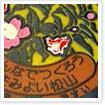 |
 |
VERNACULAR
VISUAL CULTURE IN
JAPAN
Dr. Richard
Chalfen (Temple University) was interviewed for
a local newspaper concerning his views on Japan
as a visual culture. The interview was conducted
by Kendra Sterns in East Harwich, Cape Cod, Massachusetts
during July, 2002. All photographs and links were
supplied by Dr. Chalfen after the interview. |
|
 |
 |
THE
LOGIC AND LOCATION OF METAPICTURES IN DAILY PHOTOJOURNALISM
A survey of
600+ newspaper photographs from The New York Times
that in various ways include pictures or are about
pictures or picture-making |
|
![]() |
 |
ELECTRONIC
DEMOSTRATION PORTFOLIOS
for Visual Anthropology Majors
Paper prepared
for Journal of Educational Media, Special
Themed Issue: Blended Learning.
What support strategies
can be used to improve student learning and knowledge
retention? For publication in Volume 29, 2004
|
|
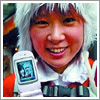 |
 |
FROM
PURIKURA (Print Club) TO SHA-MAIL TO
PURIMO-DOS AND BACK:The Beat Goes On.
|
|
 |
 |
CELEBRATING
LIFE AFTER DEATH:
The Appearance of Snapshots in Japanese Pet Grave
Sites.
Within a
larger study of Japanese personal photography
in contexts of home media, home mode communication,
and Japanese culture, this paper offers a detailed
case study of how snapshots are used in a sample
of pet cemeteries in contemporary Tokyo, Japan.
Meanings of these images are discussed in terms
of animism, memory, communication, household maintenance,
pet-extended families and connections to patterns
of human ancestor worship.
Paper in preparation for
“Looking at Animals, Looking at Society”Special
Issue of Visual Studies - Fall, 2004

|
|
 |
 |
EMPLOYEES
MUST WASH HANDS: A
Photo Essay
(in process)
Lorem ipsum dolor sit
amet, consectetuer adipiscing elit, sed diam nonummy
nibh euismod tincidunt ut laoreet dolore magna
aliquam erat volutpat. Ut wisi enim ad minim veniam,
quis nostrud exerci tation ullamcorper suscipit
lobortis nisl ut aliquip ex ea commodo.
|
|
 |
 |
GHOST
PHOTOGRAPHY:
Nihon
No Shinrei Shashin as Home Media
|
|
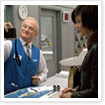 |
 |
ONE
HOUR PHOTO
A
Self-Interview
We are speaking with Dr. Richard Chalfen, Professor
of Visual Anthropology at Temple. He has been
a member of our faculty since 1972, and recently
spent three years at Temple University Japan in
Tokyo. The popularity of the recent feature film,
One Hour Photo (OHP) prompted us to contact Dr.
Chalfen.
To
Appear as Home Page Paper #16
Summer, 2004
|
|

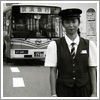
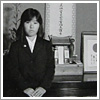 |
 |
LOOKING
AT JAPANESE SOCIETY:
Hashiguchi
George as Visual Sociologist
Paper prepared for IVSA ANNUAL MEETINGS
Southampton, UK - July 8, 2003
Abstract:
This paper examines how one Japanese documentary
photo-grapher, Hashiguchi George (b. 1949) explores
his own society and culture much like a visual
sociologist. Little known in the U.S., Hashiguchi
implicitly poses questions and provides pictorial
responses to questions of social order and Japanese
social organization.
Hashiguchi George’s work is marketed, sold
and distributed as books, as a combination of
fine art and documentary photography. His work
seems to give a fine example of Howard Becker’s
notion that “when art which is aimed at exploring
society … [it] might just as well be social
science information.”
Much of Hashiguchi’s work includes portrait
photography, images that are accompanied by written
transcriptions of a series of questions answered
by his subjects. Working like a sociological ethnographer
with a survey approach, he produces a unique overview,
one that integrates the urban and rural, ranges
of education and affluence. These themes are united
by serious attention to the individual’s
place in everyday Japanese contemporary life.
The paper will speculate on how Hashiguchi George
is offering a visual approach “to community,
state, nation… [and hence] “enhancing
social bonds and spirits of community” in
ways that are not always acknowledged or understood.
This paper addresses the kinds of sociologically-centered
questions and interpretations found in his work.
How does he generalize from the individual to
the group, society, culture? What are his methods?
How does his photographic practice (systematic
observation, working style, aesthetic perspective)
compare to other better known examples, e.g. August
Sander, Paul Strand, among others? How might this
work be classified as a “study” and,
in turn, contribute to “big dimensions”
and “grand theory”?
This paper suggests that Hashiguchi George’s
most valuable contribution to much Western thinking
is contained in the scope of his choices of people
and their geographic locations -- to present readers
with a sense of considerable socio-cultural diversity
in light of stereotypic reductions of Japan as
a homogeneous entity. Examples will come from
several of Hashiguchi’s photo-texts, namely,
17’s Map (1988), Father (1990), Couple (1992),
1991-1995 Work (1996), Ume (Dreams) (1997), and
one made-for-television documentary (1998).
|
|
 |
 |
Visual
Culture in Japan
Summer session
at Temple University Japan, Minami Azabu (Tokyo)
May 14-July 1, 2004
Temple
University offers several options for students
considering a summer program of study in Tokyo,
Japan. Japanese Visual Culture, described in this
flier, is a six-week program scheduled for May
16-June 27, 2003, which focuses on the central
theme of human visuality and specifically visual
culture in modern Japan. Based at Temple's branch
campus in Tokyo, Temple University Japan, the
program is designed for upper-level undergraduate
and graduate students interested in Japan, Asian
Studies, visual anthropology, visual sociology,
media studies, or inter-cultural communication.
Students enroll in two courses carrying three
credits each for a total of six credits.
Temple
University has the largest and longest surviving
American University campus in Japan -- see http://www.tuj.ac.jp/newsite/main/index.html

|
|
 |
| back to top |
|

|
|
 |
 |
 |
  |
| |
|
 |

